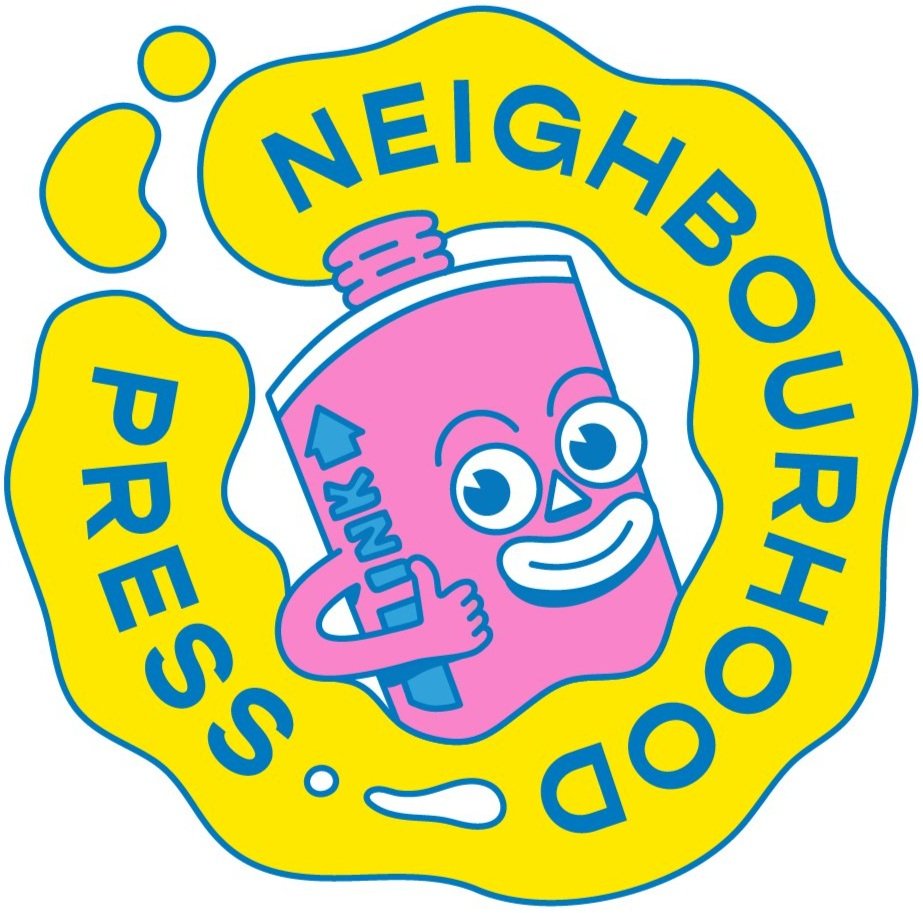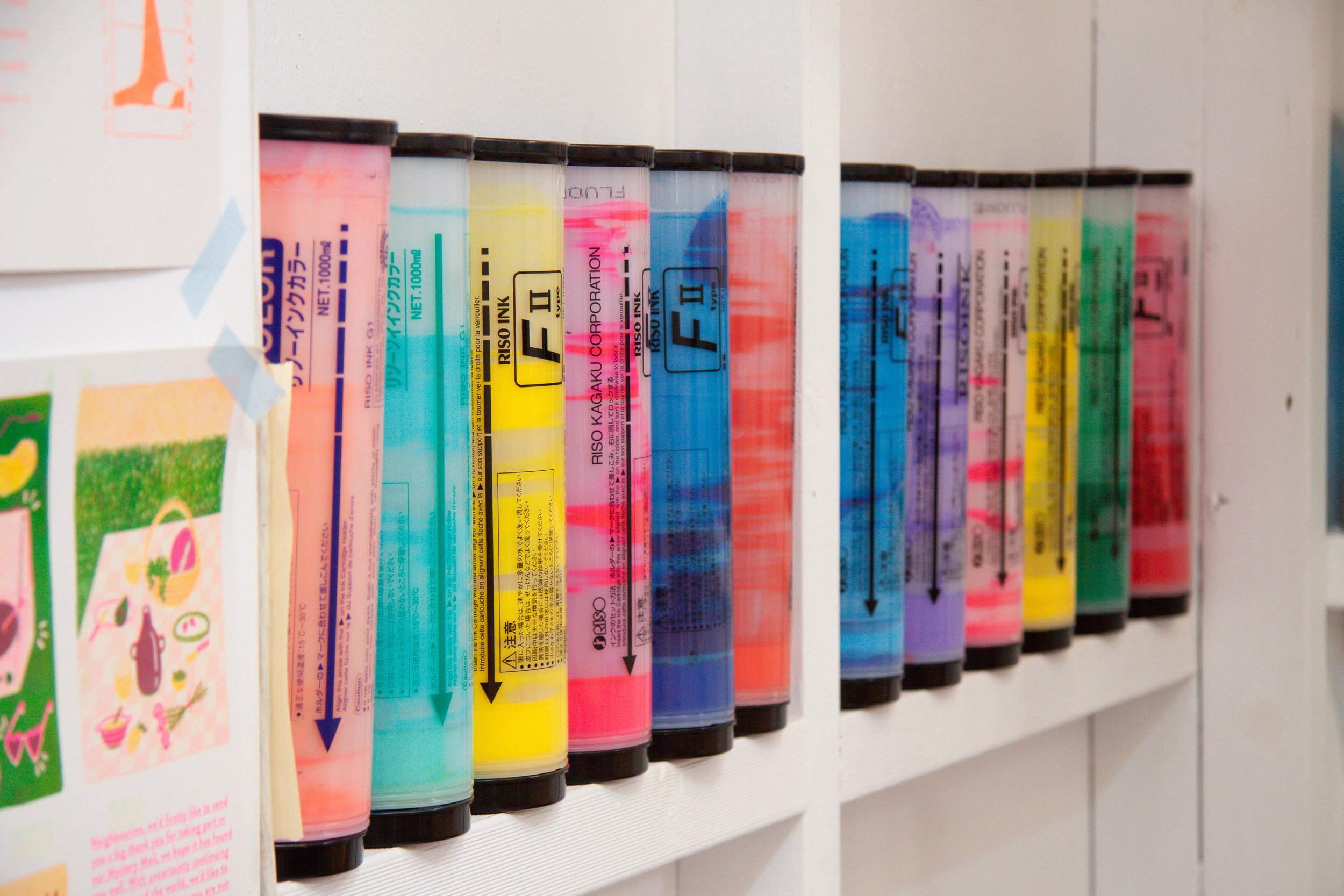At Neighbourhood Press, we love Risograph.
The bold and fluorescent colours, the smell of drying ink, the pure feeling of nostalgia you get as you leaf through printed pages; we were hooked the second we picked up our first print. But, you might be wondering what is Risograph and why is it so special?
The Japanese made Risograph printer, initially created in the 1980s for speed and high-volume duplicating, have experienced a remarkable transformation in recent years.
Whilst they were widely used in schools and offices around the world, the machines also managed to find their way into the hands of artists and printmakers. Makers have been captivated by the savvy technology of the Risograph machine and its ability to combine and layer incredibly bright and vivid colours to make prints.
But how does it work? Well, the Risograph printer is a type of stencil duplicator.
To create a print, the first step is to make a stencil. This stencil is then wrapped around a heavy cylindrical drum filled coloured ink. The drum spins at high speeds to push ink through the stencil. Paper is then fed into the printer and as it passes under the drum, ink is pressed onto the paper making a single colour print.
To add a second colour, the first ink drum is replaced with a different drum containing the second colour. A new stencil is made and the printed paper is fed back into the machine for the second layer of colour to be aligned and printed on top of the first. This process is repeated for each additional colour.
The Risograph has its own special colour system and we are lucky to have twelve inks, ranging from rich deep hues to vibrant fluorescents.
All Risograph inks are semi-transparent which allows inks to be printed on top of each other. This process is called overprinting and when combining two colours, a third colour can be made. For example you can print fluorescent pink onto blue to make an electric purple.
Risograph machines are unique in the way they combine digital methods with the best of hands on print techniques.
Our Risograph printers Ziggy and Katsumoto are RP3700 single drum machines that print colours one at a time. This makes for a more hands on and experimental printing process. The Risograph printing method can at times be unpredictable and can produce quirks, such as misalignment between colours, roller and pick-up marks and each print will have a beautiful grainy quality. These slight imperfections are what give Risograph prints their unique aesthetic and makes every print slightly different to the next.
Risograph’s unique print method not only makes for amazing prints but also makes it one of the most environmentally friendly ways to print.
Risograph printers were built with a focus on reducing their environmental footprint. The printers use a heat free print process applying a non-toxic, plant based ink. This process consumes very little power and is completely free of all pollutants common to digital, toner based printing.
All our Risograph inks are manufactured from rice bran oil; an under-utilised and environmentally friendly alternative to the petroleum based inks and toners generally used within the print industry. Our inks are non-toxic, free from nasties making them easily recyclable and compostable.
For more information on the environmental specifications of the Risograph machine and inks, please feel free to contact us.
At Neighbourhood Press, we are passionate about Risograph printing because it offers us a unique way to bring our designs to life.
The combination of vibrant colours, tactile textures, and the nostalgic feel of the printed medium make Risograph prints truly special. Our collection of Risograph machines, each with its own character and history, adds to the charm and authenticity of the prints we produce. We take pride in preserving and celebrating this print form while embracing the possibilities it offers in contemporary design and printing.

















